Updated 8 months ago
The Best Solar Generators in 2025: Portable Power for Hiking, Camping, and Home Use
Written by
Ben Zientara
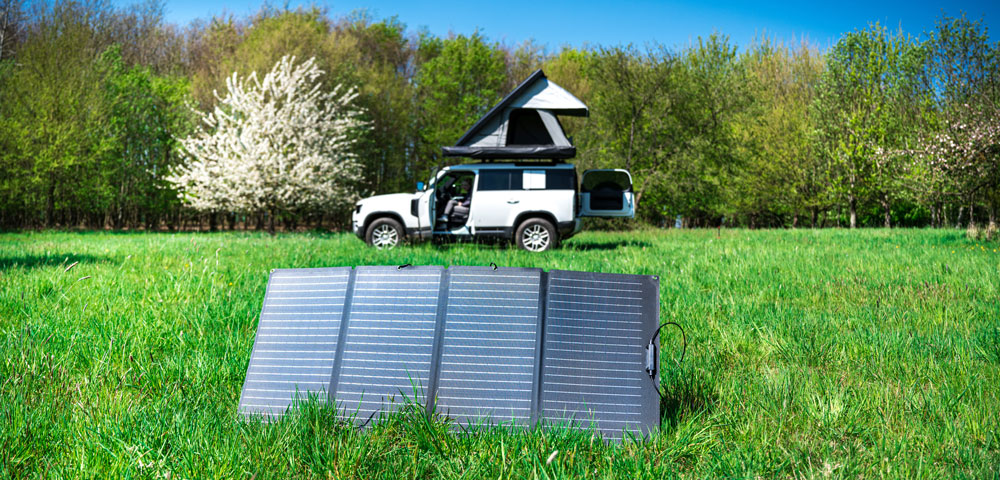
Solar generators are portable power stations that combine batteries with one or more solar panels to provide electricity almost anywhere you need it.
But, not all solar generators are created equal. Some are meant for small jobs like charging your phone while you’re camping, while others are meant for big jobs like partial home backup.
The differences between solar generators are why we created this ranking, to help you identify the best products for your needs at different price points.
Here are our picks for the best solar generators of 2025:
Category | Make & Model | Max. continuous power output | Energy storage capacity | Where to buy |
|---|---|---|---|---|
Best Small Portable | Anker SOLIX C300 | 300 W | 288 Wh | |
Best Midsize Portable | EcoFlow DELTA 3 Plus | 1,800 W | 1,024 Wh | |
Best Large Portable | EcoFlow DELTA Pro 3 | 4,000 W | 4,096 Wh | |
Best Premium Portable | Bluetti Elite 200 V2 | 2,600 W | 2,073.6 Wh | |
Best Affordable Choice | OUPES Mega 1 | 2,000 W | 1,024 Wh |
No matter how you plan to use a solar generator, at least one will be a great fit for your needs. Our team of solar experts has tested over two dozen of the latest and greatest portable power stations and portable solar panels on the market in 2025 to find the best solar generators for every type of user. You can watch our full video review below or read on to find the right solar-powered generator for you!
Best Small Portable Solar Generator: Anker SOLIX C300
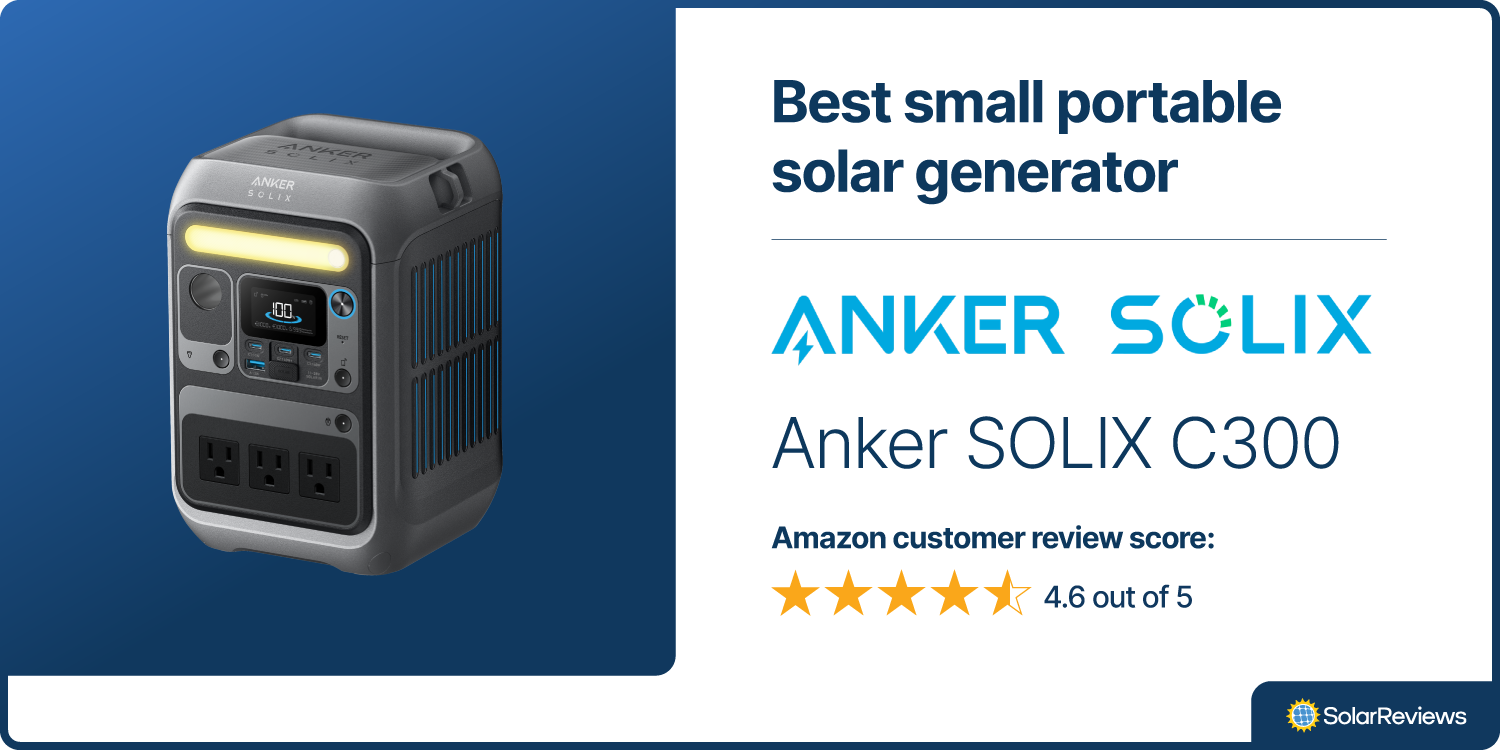
Introduced in late 2024, the Anker SOLIX C300 is a wonderful surprise. Its unique vertical form factor is something new that was instantly a huge hit among our review team. Compared to other products in its size class, it is more usable and fun to tote around than anything else on the market.
The regular SOLIX C300 comes with three AC outlets, but there is a second, DC-only version of the SOLIX C300 that’s great if you just need USB and 12V cigarette lighter ports (and it comes with a bonus pop-up light built into the top).
Best Midsize Portable Solar Generator: EcoFlow DELTA 3 Plus
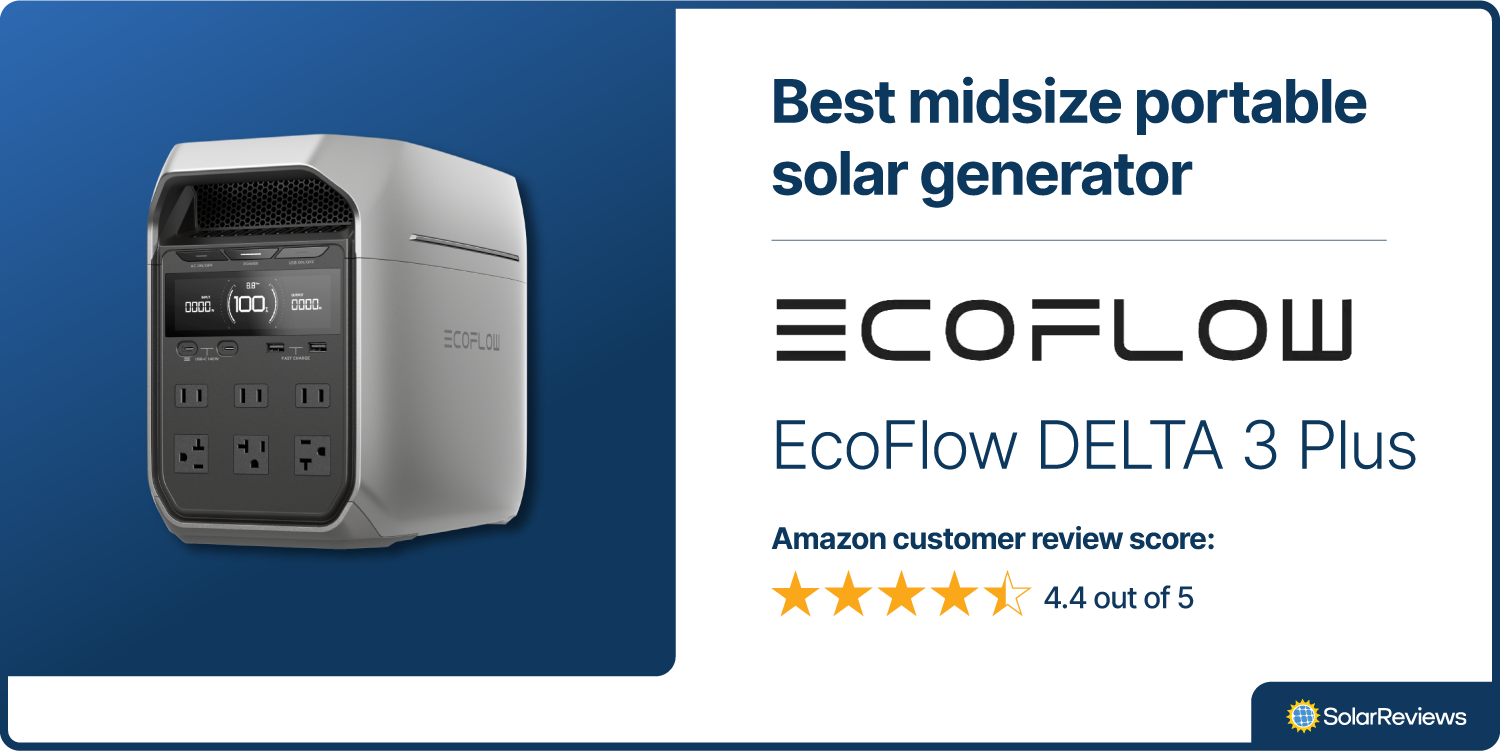
EcoFlow is one of the preeminent brands in the portable power station game, and the company revamped its lineup in 2024 with the third generation of its main product series. The DELTA 3 Plus is our #1 pick for midsize portables (around 1 kWh of storage).
Best Large Portable Solar Generator: EcoFlow DELTA Pro 3
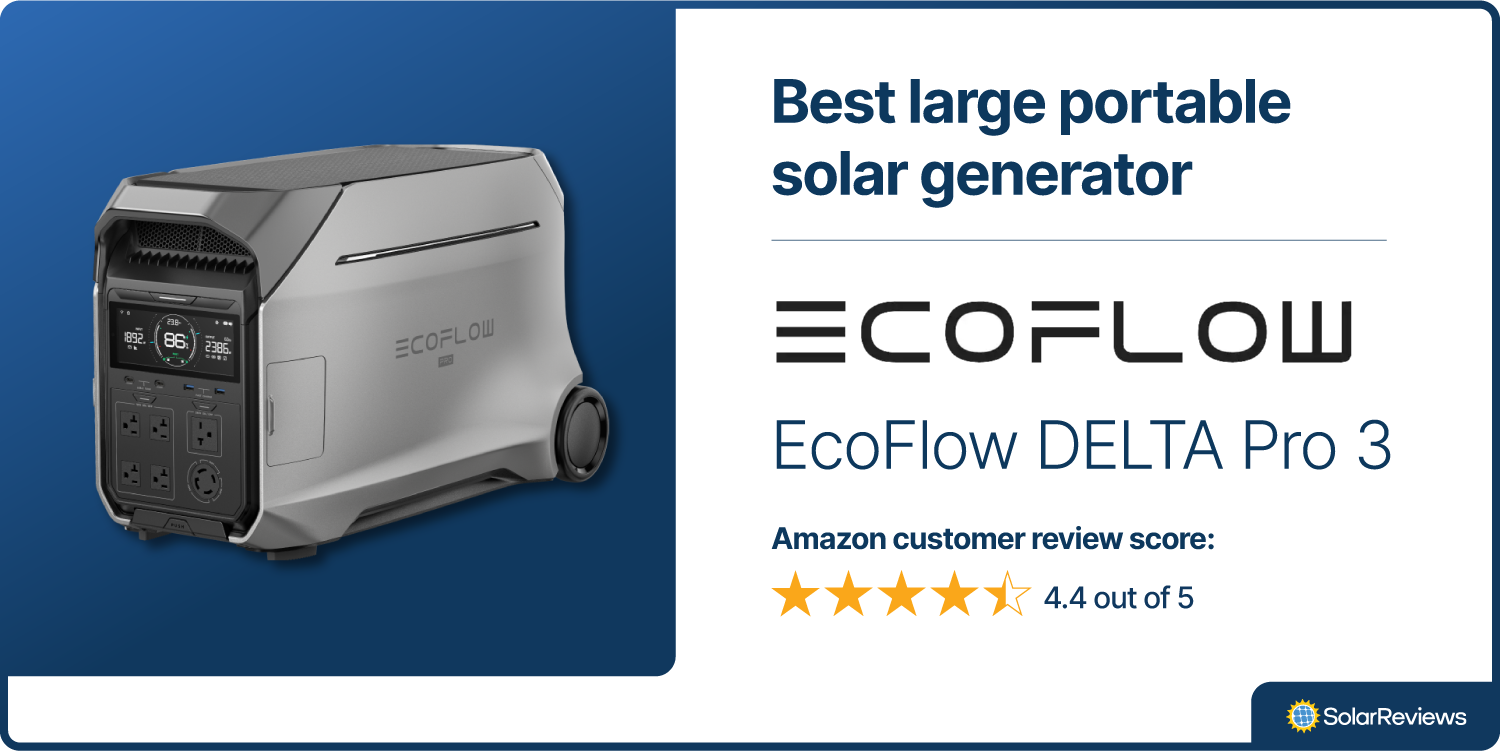
The 114-pound king-sized candy bar of the EcoFlow lineup is our best large portable solar generator of 2025. This large unit is basically the Swiss Army Knife of solar batteries, with tons of input and output options that can take it from the campsite to the job site and even into your mechanical room as a partial home backup system.
Best Premium Portable Solar Generator: Bluetti Elite 200 V2
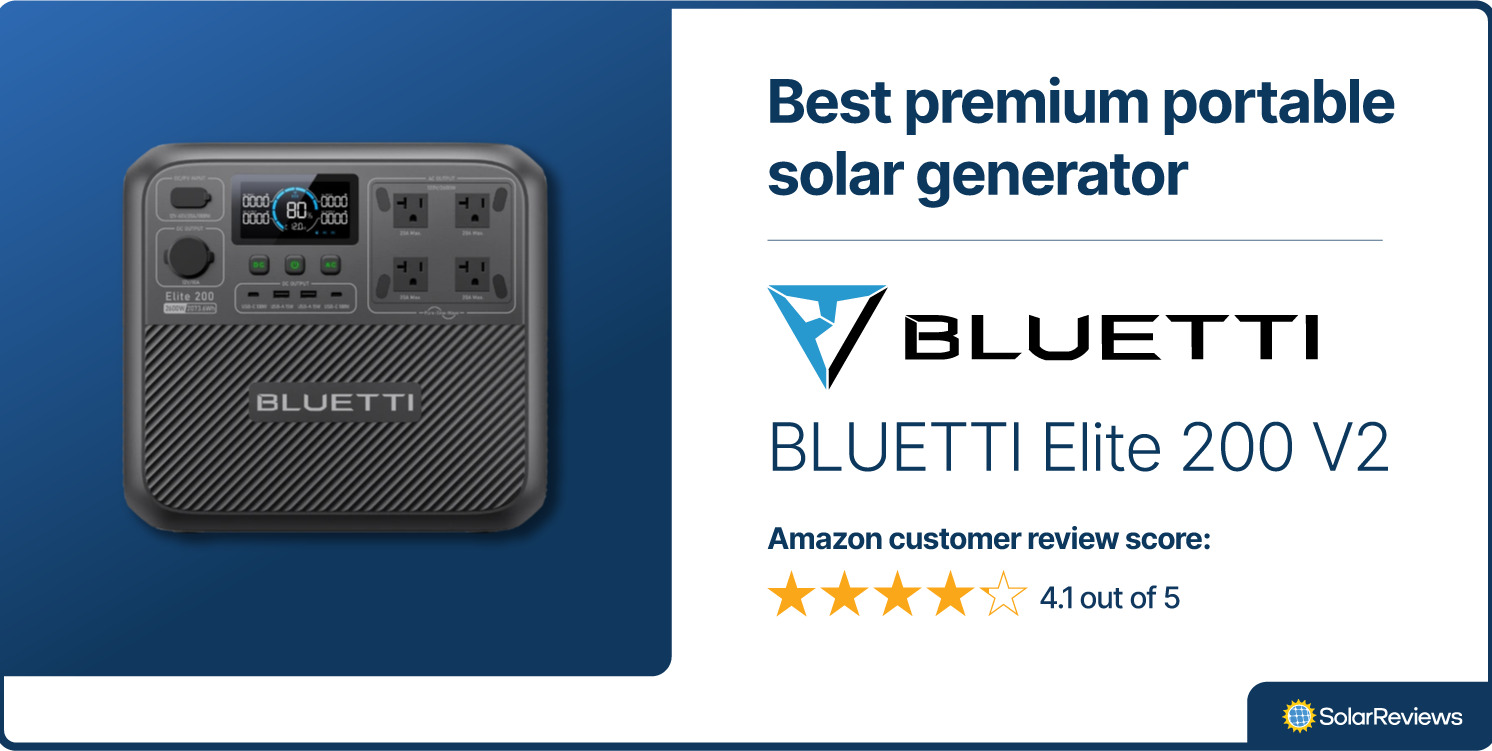
We named the Bluetti Elite 200 V2 the best premium portable solar generator for 2025, and truth be told, it may be one of the only solar generators on the market that can qualify for the title.
We use “premium” here to refer to the compactness and performance of the flat-packed automotive-grade battery cells inside the unit. These cells allow Bluetti to pack more storage into a smaller footprint than any solar generators that use cylindrical cells.
Best Affordable Solar Generator: OUPES Mega 1
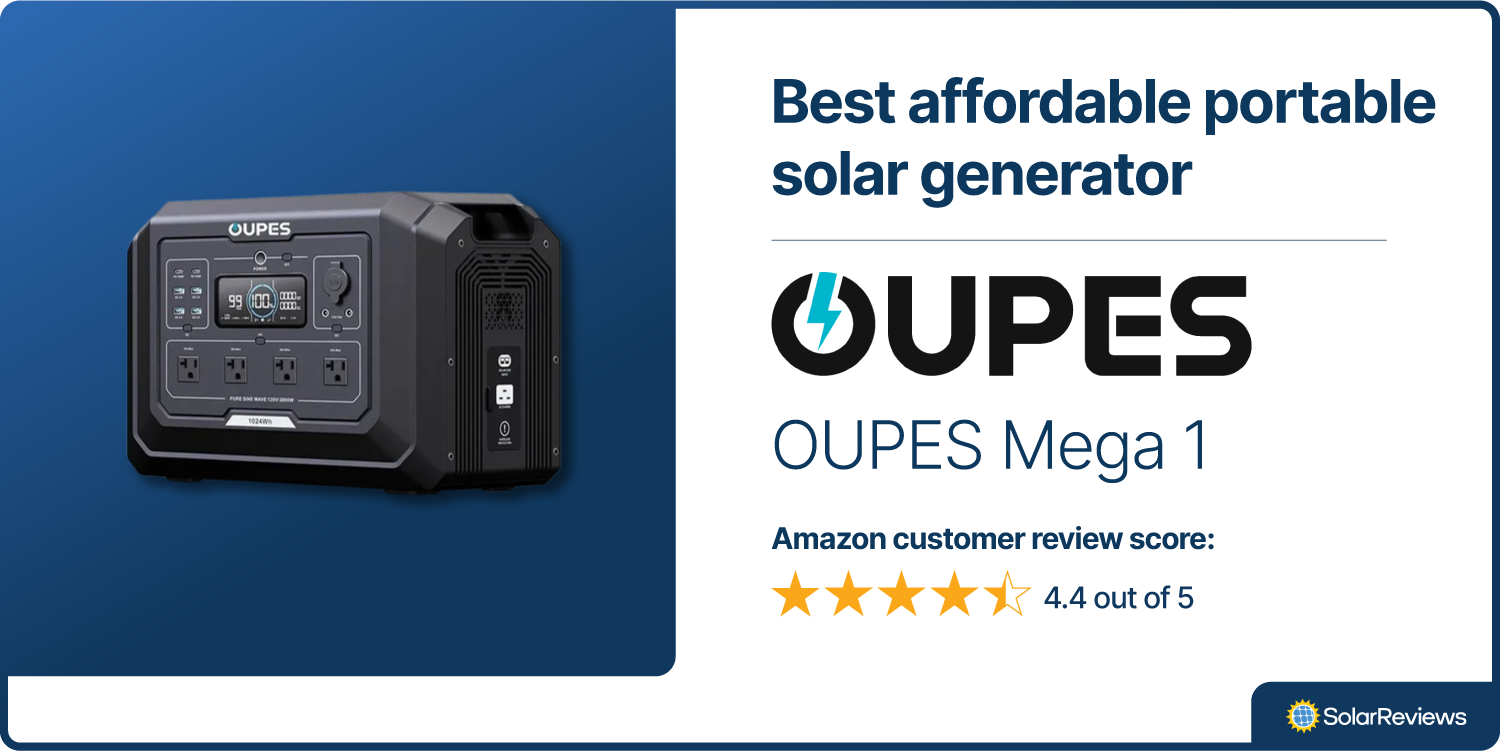
OUPES (pronounced like “opus”) is a brand that targets a more value-conscious customer but is always upping its game when it comes to functionality and power. The Mega 1 is the first OUPES solar generator we’ve tested that is expandable with additional batteries, and we love the features OUPES has packed in for the price.
How our team evaluates solar generators
Our evaluation of the best solar generators starts with a look at the numbers. We’ve created a tool that allows us to compare dozens of batteries based on their power output, storage capacity, price, weight, dimensions, types of inputs and outputs, solar charging capabilities, and other factors unique to each generator.
Then we test each battery individually, taking measurements of their physical aspects (weight, dimensions, materials) as well as their ability to output power to devices, charge from AC and solar, and how they work in practical applications.
This real-world testing proved vital in forming our opinions about the best battery for each category.
A note on battery chemistry: All portable solar generators we tested use LFP (lithium iron phosphate) battery cells. LFP is an extremely safe, stable, long-lasting, and non-toxic battery chemistry compared to other chemistries. LFP cells make a battery a bit heavier than some alternatives, but these cells have no risk of thermal runaway and last around seven times as long. We only considered LFP batteries for our ranking.
How to decide which solar generator is right for you
To decide which solar generator is best for you, it’s best to first think about all the things you’ll want it to do and work to find one that can meet your needs.
Here’s what you should look for:
Continuous power output: Make sure the generator puts out enough wattage to safely run all the devices you intend to plug in and run at once.
Energy storage capacity: Look for enough battery capacity to meet your needs over time. Take the wattage of appliances multiplied by the number of hours you want them to run. For example, say you want to run a 700-watt coffee maker for 10 minutes a day: it will use 700 watts times 1/6th hour, or 116 watt-hours of stored energy. Do the same calculation for all the devices you plan to use.
Portability: Decide how much weight you want to deal with moving around. Batteries can get quite heavy, and many people might want to have more than one solar generator to make it easier to move individually.
Specific power attributes: These are things like having a 30-amp RV outlet, accepting a certain voltage range of solar panels, or being able to run your DC fridge. People who already have a solar panel or RV may find these to be very important factors, while others will be able to match future purchases to the capabilities of the generators they buy.
Here’s a breakdown that shows average output, capacity, and weight of popular solar generator options to help you decide what category you might be looking for:
Output | Capacity | Avg. weight | Best for |
|---|---|---|---|
~300 W | ~300 Wh | 10 lbs | Charging small devices on the go on hiking trips, backyard movies, running computers for a few hours |
~600 W | ~700 Wh | 20 lbs | Overnight and weekend camping trips with phones, laptops, small lamps, cameras, etc, with or without solar recharging |
~1,200 W | ~1,000 Wh | 29 lbs | Trips with more power needs (e.g. small coffee maker), with or without solar recharging |
~1,800 W | ~1,200 Wh | 34 lbs | Off-grid living in a van or small RV, with daily solar recharging. Suitable for toasters, hair dryers, microwaves, etc. |
~2,400 W | ~2,000 Wh | 53 lbs | Running all appliances in an RV with daily solar recharging, small home backup for emergencies |
~4,000 W | ~4,000 Wh | 115 lbs | Seriously large RV applications, partial-home backup, running power tools at a worksite |
Final thoughts
There are now many companies making excellent solar generators for off-grid and home use. The list above includes our top picks for the various categories.
You can take our word for it, but you can also use our general guidelines for what to look for to identify the best solar generator to fit your specific needs. We left out some bigger names like Jackery Explorer and Goal Zero Yeti because their products don’t thrill us, but they each have some decent offerings, and we encourage you to apply the knowledge you gained from this article in deciding if one is right for you (just make sure you’re getting LiFePO4 battery cells).
Pretty much every one of these companies makes a solar generator that can fit your needs, so if you find one you like best, explore the options on the market. Once you find the right one for you, learn how to choose the right portable solar panel to charge it up.
Ben Zientara is a writer, researcher, and solar policy analyst who has written about the residential solar industry, the electric grid, and state utility policy since 2013. His early work included leading the team that produced the annual State Solar Power Rankings Report for the Solar Power Rocks website from 2015 to 2020. The rankings were utilized and referenced by a diverse mix of policymakers, advocacy groups, and media including The Center...
Learn more about Ben Zientara